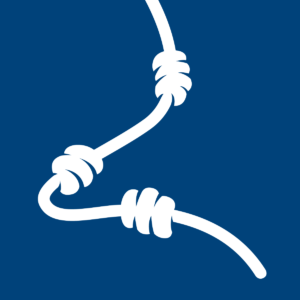
(This article is the first in a series that provides some background to our friends and supporters about the interface of the friars and the arts. This first article will focus on efforts by friars of the Province of Our Lady of Consolation in this regard.)
The current Franciscan Arts Initiative is not the friars’ first foray into supporting and promoting the arts. Our friars in Europe have had a strong relationship with the arts and artists, and we will explore this topic in a future e-newsletter. Today, we would like to give our readers some background about the province’s initial outreach to artists, The Mary Anderson Center for the Arts.
In 1988, the provincial chapter of Our Lady of Consolation Province sponsored a new initiative, The Mary Anderson Center for the Arts. The Center was named after the 19th Century actress and Louisville native who was the niece of one of our friars, Anton Müeller, OMC (Prior to the 1940s, the Order of Friars Minors Conventual was officially the Order of Minors Conventual.) Mary Anderson owned the acreage that is now Mt. St. Francis, and she would often come out to this area to ride her horse. She is quoted as saying that “Nature is in a lovely mood here.” After her marriage, Mary moved to England and donated the property to the friars, who later opened a Minor Seminary here.
The idea for an artists’ colony was the outgrowth of late-night conversation between one of our former friars, David Kocka, who was then the Guardian of Mt. St. Francis Friary, and me, friar Bob Roddy, when I moved to the Mount. David had just returned from a convention of gallery owners in Chicago. (David, an aspiring sculptor, had recently established a foundry on the Mount campus and hoped at this convention to network with other gallery owners.) David had been disappointed in his experience at the convention. “Few of the gallery owners were interested in featuring the work of an unestablished artist,” I recalled David saying. We thought it was a pity we could not utilize some of the unused or under-used buildings or spaces on the Mount campus as studio spaces for artists, especially artists who wished to try something new. I remember thinking wouldn’t it be great to offer artists a space to live and work, to try something new, and to interact with the friars? It would be reminiscent of how our friars in Europe support the arts.
David reached out to local arts organizations in the Louisville-Southern Indiana area. He invited them to tour the campus and see if there would be any way the Mount and these organizations could partner. Later that summer, a musical theater group for young people did a shortened version of “The Pirates of Penzance” near the entrance to the barn.
A few days after this initial meeting, Thomas A. Salmon II of the Westerly Group, a design and historic preservation consulting group, stopped by, and David gave him a tour. Tom was extremely excited at the possibilities and spoke to his partner and spouse, Camille Fife. They put together a proposal to the friars in which they would lead a process to explore some of the ideas that David and Tom had shared together. The Westerly Group was able to secure outside funding to pay for its services.
Upon completion of the design and planning phase, the provincial chapter of 1988 endorsed and provided financing to start up the Mary Anderson Center for the Arts. The former convent on campus was renovated and renamed Loftus House in honor of Fr. John Loftus, OFM Conv., the first Academic Dean of then-Bellarmine College and a major advocate for civil rights and ecumenical outreach.



